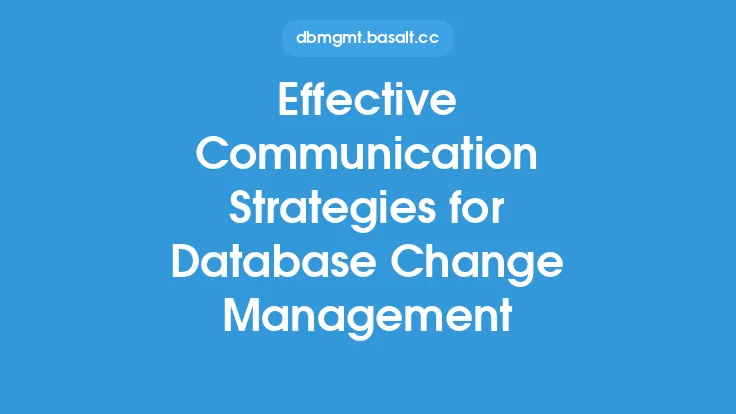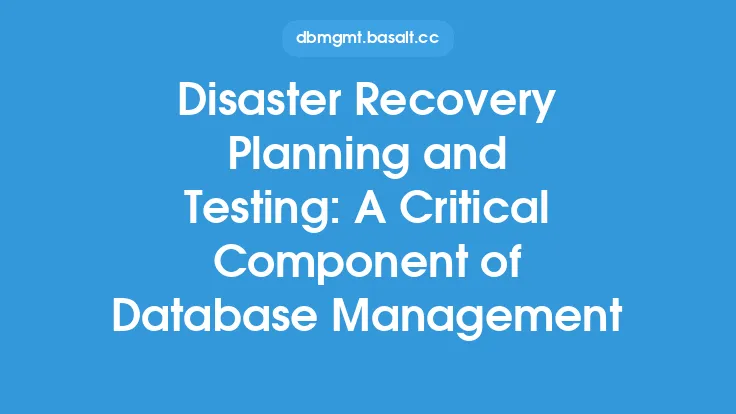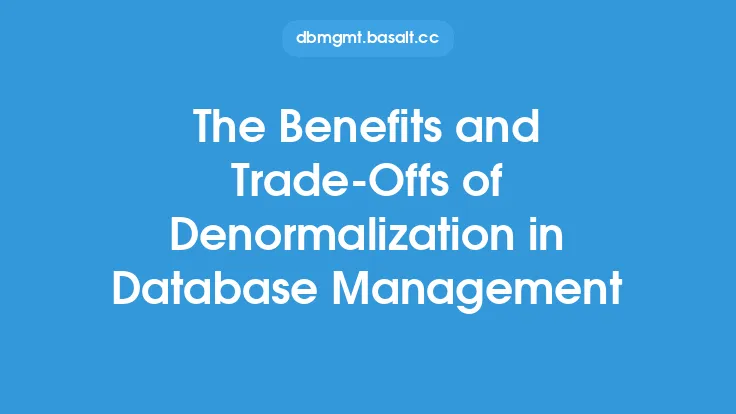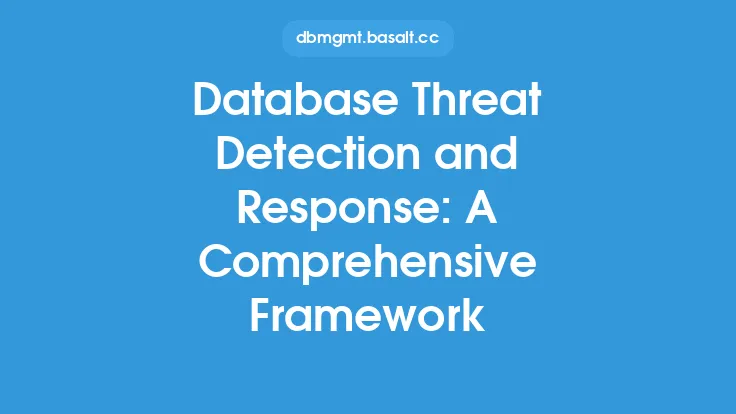Database risk management is a critical component of database security, as it enables organizations to identify, assess, and mitigate potential risks that could compromise the confidentiality, integrity, and availability of their databases. Effective risk management involves a combination of people, processes, and technology, and is essential for ensuring the security and compliance of databases. In this article, we will explore the key concepts and strategies for database risk management and mitigation, and provide guidance on how to implement a robust risk management program.
Introduction to Database Risk Management
Database risk management is a systematic approach to identifying, assessing, and mitigating risks that could impact the security and integrity of databases. It involves a thorough understanding of the database environment, including the data, systems, and processes that are in place. The goal of database risk management is to minimize the risk of data breaches, unauthorized access, and other security threats, while also ensuring compliance with relevant laws and regulations. A robust risk management program should include regular risk assessments, vulnerability testing, and penetration testing, as well as incident response and disaster recovery planning.
Identifying Database Risks
Identifying database risks is a critical step in the risk management process. This involves analyzing the database environment to identify potential vulnerabilities and threats, such as SQL injection attacks, cross-site scripting (XSS) attacks, and denial-of-service (DoS) attacks. Other risks may include data corruption, hardware failure, and unauthorized access to sensitive data. To identify database risks, organizations should conduct regular risk assessments, which may include vulnerability scanning, penetration testing, and code reviews. They should also monitor database activity and system logs to detect potential security threats.
Assessing Database Risks
Once database risks have been identified, they must be assessed to determine their likelihood and potential impact. This involves evaluating the potential consequences of a security breach or other incident, and determining the likelihood of such an event occurring. The assessment should take into account the sensitivity of the data, the potential impact on the business, and the effectiveness of existing security controls. Organizations should use a risk assessment framework, such as NIST or ISO 27001, to guide the assessment process and ensure that all relevant factors are considered.
Mitigating Database Risks
Mitigating database risks involves implementing controls and countermeasures to reduce the likelihood and potential impact of a security breach or other incident. This may include implementing access controls, such as authentication and authorization, to restrict access to sensitive data. Other controls may include encryption, firewalls, and intrusion detection systems. Organizations should also implement incident response and disaster recovery plans to ensure that they are prepared to respond to a security incident or other disaster. Regular security testing and vulnerability assessments should also be conducted to identify and remediate potential vulnerabilities.
Implementing Database Risk Management Controls
Implementing database risk management controls involves putting in place the people, processes, and technology needed to manage and mitigate database risks. This may include implementing a risk management framework, such as COBIT or ISO 27001, to guide the risk management process. Organizations should also establish a risk management team, which should include representatives from IT, security, and compliance. The team should be responsible for conducting risk assessments, implementing controls, and monitoring database activity to detect potential security threats. Regular training and awareness programs should also be conducted to ensure that all personnel understand the importance of database risk management and their role in the risk management process.
Database Risk Management Technologies
A range of technologies are available to support database risk management, including database security tools, such as encryption and access control systems. Other technologies may include vulnerability scanning and penetration testing tools, which can be used to identify potential vulnerabilities and test the effectiveness of security controls. Organizations should also consider implementing database activity monitoring (DAM) systems, which can be used to monitor database activity and detect potential security threats. Cloud-based database security solutions may also be considered, which can provide a range of security features, including encryption, access control, and monitoring.
Best Practices for Database Risk Management
Best practices for database risk management include implementing a risk management framework, conducting regular risk assessments, and implementing controls and countermeasures to mitigate identified risks. Organizations should also establish a risk management team, which should include representatives from IT, security, and compliance. Regular training and awareness programs should also be conducted to ensure that all personnel understand the importance of database risk management and their role in the risk management process. Organizations should also consider implementing a continuous monitoring program, which can be used to monitor database activity and detect potential security threats in real-time.
Conclusion
Database risk management is a critical component of database security, as it enables organizations to identify, assess, and mitigate potential risks that could compromise the confidentiality, integrity, and availability of their databases. Effective risk management involves a combination of people, processes, and technology, and is essential for ensuring the security and compliance of databases. By implementing a robust risk management program, organizations can minimize the risk of data breaches, unauthorized access, and other security threats, while also ensuring compliance with relevant laws and regulations. Regular risk assessments, vulnerability testing, and penetration testing, as well as incident response and disaster recovery planning, are all critical components of a robust risk management program.





